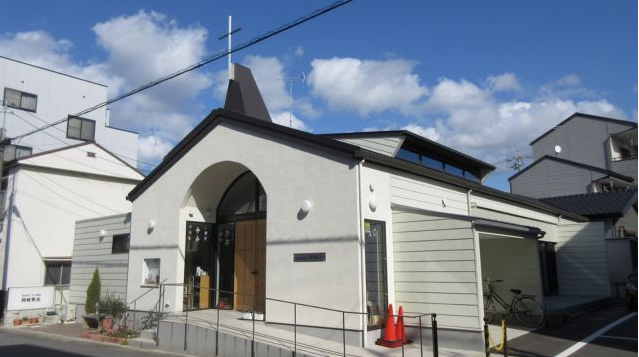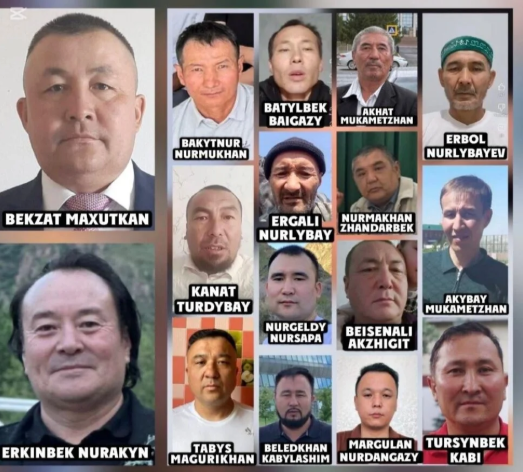Japan: Lawyers, Deprogramming, and the Unification Church Dissolution Case. 3. The Pact with the United Church of Christ of Japan
- info775148
- 12. 6.
- Minut čtení: 5
Secular left-wing anti-cult lawyers cooperated with Protestant ministers who acted as deprogrammers.
June 12, 2025

Lawyer Hiroshi Yamaguchi is a key founder of the anti-Unification Church NNLSS and was appointed Secretary General of the Network when it was incorporated in May 1987.
His background reveals his radical left-wing obedience (he was part of the faction of the Socialist party close to the Communists), his fight against the donations made to the Unification Church, and his participation in consumer affairs institutions over the years to this end.
He also established contacts and collaborated with pastors engaged in deprogramming, which they called “rescue,” from an early time.
According to an article published in May-July 1987 (in the monthly magazine “Zenbo,” conservative), the origin of the mechanism for criticizing the “spiritual sales’” was the “Countermeasures Committee against the Unification Church,” which was created in 1986 in the Social Culture Center of Law, an association established in 1981 with the support of the Socialist Party.
Out of the three lawyers, Hiroshi Yamaguchi, Kazuo Ito, and Yasushi Higashizawa, who gave a press conference on the occasion of the inauguration of the Lawyers’ Network for Victims of Spiritual Sales (LNVSS) in February 1987, Hiroshi Yamaguchi and Yasushi Higashizawa were members of the Social Culture Center of Law.
LNVSS was a local association in Tokyo, which was followed by and included in the National Network of Lawyers against Spiritual Sales (NNLSS), which was incorporated three months later, in May 1987.
In the January 31, 1987, edition of the “Center News,” the official newspaper of the Social Culture Center of Law, Attorney Hiroshi Yamaguchi made the following appeal: “Needless to say, ‘spiritual sales’ are the activity of the Unification Church as an organization, under the guise of ‘economic activity,’ to sell marble vases and pagodas for several million yen or more with reference to the ‘Spirit.’ This money is used to finance the Unification Church and VOC’s campaign to enact the National Secrets Act. [VOC, the International Federation for Victory Over Communism, was created by Reverend Moon in 1968; National Secrets Act was the name its opponents gave to the anti-spying law.] The actual damage and the flow of funds have been repeatedly reported in the ‘Asahi Journal’ and the ‘Asahi Shimbun’ [newspaper].
Now, the members of the Social Culture Center of Law, who have been working on the issue of spiritual sales, have decided to form the Lawyer’s Network for Victims of Spiritual Sales (tentative name). I would like to take this opportunity to invite our members to participate.”

In parallel, in 1986, following the creation of the “Countermeasures Committee against the Unification Church” by the lawyers, pastors of the United Church of Christ of Japan (UCCJ), who were already involved in the “rescue” of Unification Church believers, created on October 2 and 3 the “National Network on the Unification Principle Issue.” A few years later, the lawyers and the pastors openly announced their collaboration.
The “National Network on the Unification Principle Issue” (including the UCCJ Pastors) held a two-day meeting on October 21 and 22, 1991, in a church conference room. At that meeting, Pastor Makoto Sugimoto from UCCJ’s Nishio Church stated that the “youth return cases” were the most effective means of countering the Unification Church.
The “youth return cases” designates a series of court cases brought by the Lawyers’ Network to destroy the Church (per their own statement): they sought compensation for young adults who had joined the Unification Church and recanted their faith under the violent deprogramming called “rescue” by pastors, and had to sue the Church to escape from confinement.
The first youth return case occurred in Sapporo, with twenty plaintiffs, young adults who had been deprogrammed from 1986 to 1992. The twenty plaintiffs sought damages based on tort for financial damage and alleged mental suffering caused “by the illegal evangelistic activities of the Church.”
This was the first “return youth case” in the Sapporo District Court. Sixteen out of the twenty plaintiffs had been deprogrammed per the evidence in the record of the Court: they had been abducted and confined in apartments or hotels and had left the Church after “exit persuasion” in specially prepared rooms.
The Sapporo District Court issued a judgment in favor of the plaintiffs. The court found that the activities of the Church, including the raising of donations, “when viewed in light of social norms,” were based on “unjust purposes” since: “The plaintiffs were systematically, organizationally, and purposefully educated to seek salvation in the doctrines of the defendant organization.”
In other words, the proselytism itself and conversion to the faith were considered by the Court to violate “social norms,” and to constitute an “unjust purpose.”
This finding, which blatantly infringes the right to freedom of religion or belief of the Unification Church members who solicited the donations, was upheld by the Sapporo High Court. Since the Supreme Court dismissed the appeal, the judgment of the Sapporo High Court became final.

Two other youth return cases followed before the same Sapporo District Court, which ended with similar rulings:
one with sixty-three plaintiffs, forty of whom were former believers, and the remaining twenty-three were relatives of the former believers who became plaintiffs;
the second one with forty plaintiffs, sixteen of whom were former believers, and the remaining twenty-four were relatives and friends of the former believers who became plaintiffs.
This illustrates how these cases were entirely built on deprogramming, as all the plaintiffs stemmed from it.
These three youth return cases in Sapporo were part of the thirty-two cases that the government relied on to recently claim the dissolution of the Church’s religious corporation, as well as five others filed and judged over the years. Some additional youth return claims were settled and also included in the dissolution request.
This gives an understanding of the pastors’ statement at the 1991 meeting at the UCCJ church, mentioned above, that “youth return cases” were the most effective means of countering the Unification Church.
At this 21–22 October 1991 meeting, attorney Hiroshi Yamaguchi from the Lawyers’ Network was invited as a speaker. He was the leading lawyer in the cases of deprogrammed young adults. He commented, “This lawsuit is hitting the Unification Church like a jab.”
According to the article published in the “Kyodan Times,” the newspaper of UCCJ, on November 16, 1991, the meeting participants reached a consensus to continue the “rescue” activities steadily while centering their efforts on the youth return cases, to bring about the Unification Church’s “destruction.” The purpose could not have been more clearly stated.
Source: bitterwinter.org









Komentáře